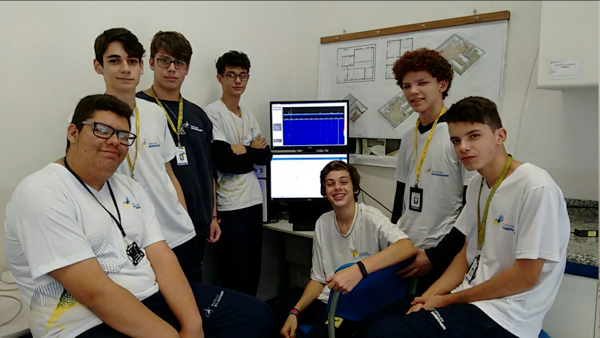High school students in Brazil are building a ground station for the amateur radio transponder on the QO-100 geostationary satellite as part of a STEM education project.
A group of eight students, from Colégio Embraer Casimiro Montenegro Filho in Botucatu state of São Paulo, are participating in all steps of the project with the help of teachers and amateur radio volunteers from LABRE/AMSAT-BR (Edson PY2SDR, Demilson PY2UEP, José PU2MJR).
The station consists of a 1.2m offset dish antenna, an Amiko L-104 LNBF, a home-made bias-t, a RTL-SDR receiver and SDRsharp software running on a dedicated computer. During the project students were exposed to several STEM topics related to radio communications, antennas, software defined radios, geostationary orbits as well as hand-on activities during the station assembly and configuration.
The students were able to successfully receive test transmissions in morse code kindly made by Roland PY4ZBZ and Fábio PY4AJ. The next step of the project is to introduce digital communication concepts, decode the BPSK engineering beacon and finally to add transmission capability to the station. In the near future, besides making contacts with other stations on QO-100, the students would also very much like to contact other schools and students in the QO-100 footprint.
Watch Report on the students QO-100 project
(you can enable YouTube Subtitles and then enable Auto-Translate)
[youtube https://www.youtube.com/watch?v=2kcar5VWJqI]
QO-100 (Es’hail-2) information https://amsat-uk.org/satellites/geo/eshail-2/

